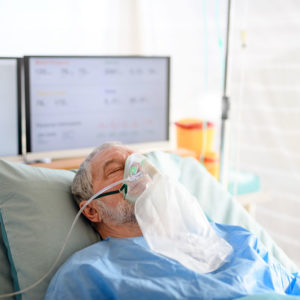Interventional Care


We notice that you are visiting us from . This site only services US-based visitors. Would you like to visit the site that is appropriate for your location?

2020 marks the inception of what is being coined as the new normal – a term that defines our current lifestyle as “post-pandemic”. And, while COVID-19 continues to affect everyone’s wellbeing, one of the most important realities of this virus is that it significantly impacts our elderly population and those with compromised immunity (comorbidities). Most afflicted are the Long Term Care Facilities (LTCFs), which include nursing homes, skilled nursing facilities, & assisted living facilities. As the number of cases and deaths continue to increase, new strategies have been put in place aimed at mitigating the spread and the devastating outcomes in LTCFs.
LTCFs Regulation, a Historical Perspective:
According to National Healthcare Safety Network (NHSN), LTCFs provide care and residence to about 4 million people in the U.S. Although infection data has been sparse due to non-mandated reporting, literature estimates 1 to 3 million infections occur annually in LTCFs. 1 NHSN helps track some of the most common infections, such as urinary tract infections, diarrheal illness (Clostridioides difficile), and Multidrug-resistant Organisms (MDROs). The goal in tracking this data is to improve outcomes in LTCFs, while reducing morbidity and mortality. This is a very serious effort and endeavor, given that as many as 380,000 people die of these infections in LTCFs every year. [1]
Another key regulatory component in assisting with LTCFs outcomes is the Centers for Medicare & Medicaid Services (CMS). In 1989, CMS first provided LTCFs regulatory requirements for participation in Medicare and Medicaid programs.3 These requirements were updated in 1991, and then most recently in 2016 with new evidence and information used to aid in increasing safety and improving health outcomes.3 Implementation of these requirements has been done in phases with the third and final phase initially slated to be implemented on November 28, 2019. However, due to a lack of clear guidance and education for LTCFs in executing these requirements, CMS proposed to release “Interpretive Guidance” in 2020. CMS also placed surveys for compliance with these regulations on hold.
Why is this delay so important to acknowledge? The third phase was an instrumental regulatory component for LTCFs in development and implementation of an infection prevention and control program. Prior to these requirements, LTCFs were not required to have an actual infection prevention program, much less a qualified infection preventionist.3 This regulatory guideline makes it mandatory to develop a robust infection prevention and control program that incorporates trained infection preventionist(s), surveillance, education, policies and procedures, disease prevention and management, cleaning and disinfection, hand hygiene, antibiotic stewardship, etc.[2]
In a recent analysis done by the U.S. Government Accountability Office (GAO), infection prevention and control deficiencies were the most common type of deficiency in nursing homes. About 82 percent of nursing homes surveyed from 2013-2017, were cited due to infection prevention and control deficits.6 The most common infractions were due to improper hand hygiene, and inadequate disease outbreak management with proper isolation and use of personal protective equipment. Half of these facilities were cited multiple times in consecutive years, and all states had delinquent facilities. This persistent infection prevention and control vulnerability painted a gloomy future to come.⁶
Fast forward to early 2020:
The novel 2019 coronavirus disease (COVID-19) outbreak ignites and rapidly progresses into a pandemic. LTCFs become ground zero in the fight against the virus. And, unfortunately, they are meagerly armed with infection prevention and control education and resources. An uncomfortable realization occurred fairly early on in the COVID-19 pandemic— our LTCFs are gravely ill-equipped to mitigate this virus without some immediate help. Seemingly overnight, LTCFs became amateur “experts” by force in a field they had been severely delinquent in for some time. CMS and the Centers for Disease Control and Prevention (CDC) became significantly active in this effort. Now there are many new guidelines and recommendations in place to curb COVID-19 in LTCFs.
As of the week ending on July 5th, the total COVID-19 LTCF resident cases and deaths were as follows:
This accounts for nearly 30% of the COVID-19 deaths nationwide, although this number is likely over 40%.⁷ A gloomy realization, foreshadowed by years of infection prevention and control violations.
As we continue to ask, “how did this happen?”— our society must continue to support LTCFs and ensure accountability. Reactionary measures have enabled a new semi-competence for LTCFs in the field of infection prevention. To ensure this horrific cycle is never repeated, proficiency in infection prevention and control must be a requisite for all LTCFs. It is our ethical, human responsibility to safeguard our most vulnerable populations from tragic events such as this.